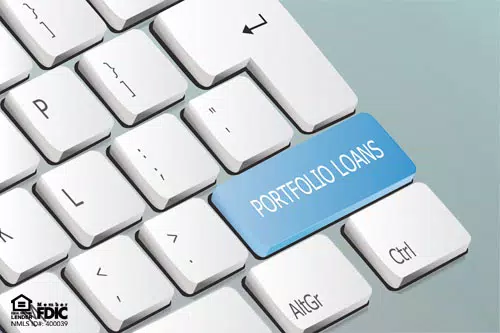While most people dream of one day owning their own home, past financial troubles can make that goal more difficult. However, portfolio mortgages are a viable loan option for borrowers who don’t have perfect credit or who fall outside conforming loan guidelines.
Often, mortgage lenders sell the loans they originate to another lender or government entity, such as Fannie Mae, to generate funds to lend to others. However, these buyers require the loans to meet specific guidelines.
Some loans, however, aren’t sold but are kept and serviced by a lender. These types of loans are called portfolio loans and typically have more flexible lending guidelines.
Why consider a portfolio loan?
Portfolio loans can be a more flexible option for borrowers who do not meet the criteria required for a conventional mortgage loan. Borrowers who fall into that category include:
- Borrowers who have experienced financial hardships in the past. A foreclosure or bankruptcy in your past can make it very difficult to obtain financing. A portfolio loan can be a potential option if you have faced judgments, liens, or tax issues. Conventional mortgage loans also have credit score minimums that may not be feasible due to your previous financial situation.
- Unique borrowers include foreign nationals, self-employed borrowers, those with no documented income, and those with high net worth. The underwriting guidelines of a traditional mortgage loan require documented proof of income to qualify. Foreign nationals looking to purchase a home in the U.S. likely don't have an established credit history or a credit score to be eligible for a mortgage. Borrowers in these situations can turn to a portfolio loan.
Portfolio Loan Differences
Interest rate
A portfolio loan presents a higher risk for lenders as they cannot sell it to other lenders. Loan rates are often slightly higher than government-backed loans to offset the higher risk. The minimum down payment amount required for a portfolio loan could also be 10% to 30% higher.
Closing costs
Closing costs on a portfolio loan may include additional fees or higher charges. They are generally 3% to 4% higher than traditional mortgage closing costs. Knowing these extra costs is essential before considering a portfolio loan.
Like with other mortgage loans, you should research to ensure that a portfolio loan is your best option for financing a new home. Since lenders can set their rates and criteria with a portfolio loan, vet several lenders to ensure you get the best possible terms.
If you would like to determine whether a portfolio loan is right for your situation, call the experts at NASB at 888-661-1982.




